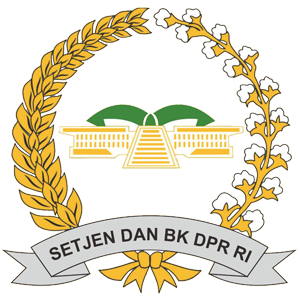CLASSIFICATION OF REGENCIES/MUNICIPALITIES IN CENTRAL JAVA BASED ON THE TOURISM RESOURCES
Abstract
Keywords
Full Text:
PDFReferences
Books
Han, J and M. Kamber. (2000). Data Mining: Concepts and Techniques. Massachusetts: Morgan Kaufmann Publisher.
Hair, J. F., JR., Anderson, R. E., Tatham, R. L., & Black, W. C. (1998). Multivariate Data Analysis, fifth edition. USA: Prentice-Hall Inc.
Widarjono, A. (2007). Ekonometrika Teori dan Aplikasi untuk Ekonomi dan Bisnis. Yogyakarta: Ekonisia FE UII. Central Java Provincial Youth, Sports and Tourism
Service. (2017). Statistik Pariwisata Jawa Tengah Tahun 2016.
Dillon, W.R, and Goldstein, M. (1984). Multivariate Analysis Methods and Aplication. Canada: Jogn Willey and Sons.
Peter, L. and Olsen, J. L. (1987). Consumer Behaviour: Marketing Strategy Perspectives. Burr Ridge IL: Irwain.
Timothy , D. J. (2011). Cultural Heritage and Tourism: An Introduction. Toronto: Channel View Publications. Scientific Journals and Working Paper
Rivani, Edmira. (2010). Aplikasi K-Means Cluster untuk Pengelompokkan Provinsi Berdasarkan Produksi Padi, Jagung, Kedelai, dan Kacang Hijau tahun 2009. Jurnal Mat Stat, Vol. 10 No. 2, Juli 2010, 122-134.
Libao Z, Faming L, An L, Pingping G, Cong L. (2016). Application of K-Means Clustering Algorithm for Classification of NBA Guards. International Journal of Science and Engineering Applications, Vol. 5, Issue 1, 2016.
Anastasopoulos, P. (1989). The U.S. travel account: The impact of fluctuations of the U.S. dollar. Hospitality Education and Research Journal, 13, 469-481.
Cadotte, E.R. & Turgeon, N. (1988). Satisfiers and Dissatisfiers: Suggestions from Consumer Complaints and Compliments. Journal of
Consumer Satisfaction, Dissatisfaction and Complaining Behavior, 1, 74-79.
Kozak, M. & Rimmington, M. (2000) Tourist Satisfaction with Mallorca, Spain, as an OffSeason Holiday Destination, Journal of Travel Research, 38, 260-269.
Kim, K J. & Alin A, H. (2008). Recommended System Using GA K-Means Clustering in an Online Shopping Market “, Expert System with Application, Vol. 34, PP.1200-1290, 2008.
Handoyo R, Rumani R, Nasution SM. (2014). Perbandingan Metode Clustering Menggunakan Metode Single Linkage dan K-Means pada
Pengelompokan Dokumen. JSM STMIK Mikroskil, Vol 15, No. 2, Oktober 2014.
Chen, C. M., Chen, S. H. & Lee, H. T. (2011). The destination competitiveness of Kinmen‘s tourism industry: exploring the
interrelationships between tourist perceptions, service performance, customer satisfaction and sustainable tourism. Journal of Sustainable
Tourism, 19, 247-264.
Gartner, W. C. (1994). Image formation process. Journal of Travel & Tourism Marketing, 2, 191- 216.
Crouch, G. I. & Ritchie, J. R. B. (1999). Tourism, Competitiveness and Societal Prosperity. Journal of Business Research, 44, 137-152.
Cai, L. A. (2002). Cooperative Branding for Rural Destinations. Annals of Tourism Research, 29, 720-742.
Chi, C. G. Q. & Qu, H. (2008). Examining the Structural Relationships of Destination Image, Tourist Satisfaction and Destination Loyalty: An
Integrated Approach. Tourism Management, 29, 624-636.
Cracolici, M. F., Nijkamp, P. & Rietveld, P. (2008). Assessment of Tourism Competitiveness by Analysing Destination Efficiency. Tourism
Economics, 14, 325-342.
Dwyer, L. & Kim, C. (2003). Destination Competitiveness: Determinants and Indicators. Current Issues in Tourism, 6, 369-414.
Gartner, W. C. (1986). Temporal Influences on Image Change. Annals of Tourism Research, 13, 635-644.
Gomezelj, D. O. & Mihalic, T. (2008). Destination competitiveness-- Applying Different Models, The Case of Slovenia. Tourism Management, 29, 294-307.
Hudson, S., Ritchie, B. & Timur, S. (2004). Measuring Destination Competitiveness: An Empirical Study of Canadian Ski Resorts. Tourism and Hospitality Planning & Development, 1, 79-94.
Kang, S. K. & Hsu, C. H. (2005). Dyadic Consensus on Family Vacation Destination Selection. Tourism Management, 26, 571-582.
Konecnik, M. & Gartner, W. C. (2007). CustomerBased Brand Equity for a Destination. Annals of Tourism Research, 34, 400-421.
Kozak, M., Baloglu, S. & Bahar, O. (2010). Measuring Destination Competitiveness: Multiple Destinations Versus Multiple Nationalities.
Journal of Hospitality Marketing & Management, 19, 56-71.
Murphy, L., Moscardo, G. & Benckendorff, P. (2007). Using Brand Personality to Differentiate Regional Tourism Destinations. Journal of Travel Research, 46, 5-14.
Ritchie, J. R. B & Crouch, G. I. (2000). The Competitive Destination, a Sustainable Perspective. Tourism Management, 21, 1-7.
Yoon, Y & Uysal, M. (2005). An Examination of The Effects of Motivation and Satisfaction on Destination Loyalty: a Structural Model. Tourism Management, 26, 45-56.
Yuksel, A. (2007). Tourist Shopping Habitat: Effects on Emotions, Shopping Value and Behaviours. Tourism Management, 28, 58-69.
Proceedings and Focus Group Discussion
Y, Miyazaki., & K, Kurasige. (2010). Use of Reward Independent Knowledge on Reinforcement Learning for Dynamic Environment, Paper was Presented in ICACSIS 2010 Faculty of Computer Science Universitas Indonesia, Depok.
J. Santoso, G.O, Van Albada, B. Nazief, P.M.A. Sloot. (2010). Hierarchical Job Scheduling for Cluster of Workstation, Published Conference Proceeding Style in Proc the 6th ASCI, Delft Netherland,.
M.E, Celebi., HA, Kingraul., & P.A, Vela. (2013). Comparative Study of Efficient Intralization Methods for the K-Means Clustering Algorithm,
Expert System with Application.

This work is licensed under a Creative Commons Attribution-NonCommercial-ShareAlike 4.0 International License.
Refbacks
- There are currently no refbacks.


 Edmira Rivani
Edmira Rivani


